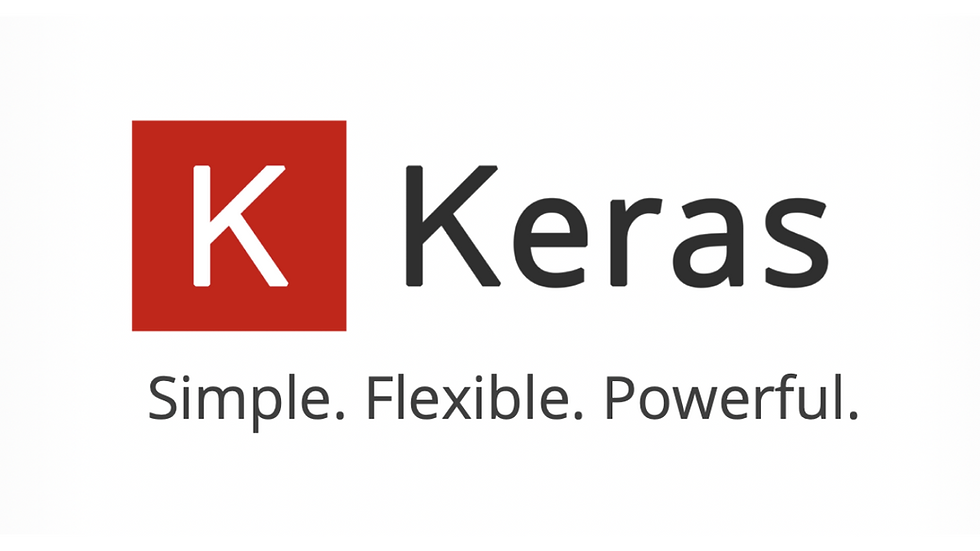Applications of keras | Keras Assignment Help
- Pushkar Nandgaonkar
- Feb 21, 2023
- 2 min read
Keras is a popular deep learning library that provides a simple and intuitive interface for building and training deep neural networks. It has gained wide popularity in the machine learning community due to its ease of use, flexibility, and scalability. In this article, we will discuss the applications of Keras in computer vision, natural language processing, recommendation systems, and time series analysis.

Computer Vision Applications
Computer vision is the field of artificial intelligence that focuses on enabling machines to interpret and understand the visual world. Keras provides a wide range of tools for building and training deep neural networks for computer vision applications, such as image classification, object detection, and segmentation.
For example, we can use Keras to build a convolutional neural network (CNN) for image classification.
Here is an example of how to define a CNN in Keras:
from tensorflow.keras import layers, models
model = models.Sequential()
model.add(layers.Conv2D(32, (3, 3), activation='relu', input_shape=(28, 28, 1)))
model.add(layers.MaxPooling2D((2, 2)))
model.add(layers.Conv2D(64, (3, 3), activation='relu'))
model.add(layers.MaxPooling2D((2, 2)))
model.add(layers.Conv2D(64, (3, 3), activation='relu'))
model.add(layers.Flatten())
model.add(layers.Dense(64, activation='relu'))
model.add(layers.Dense(10))
Natural Language Processing Applications
Natural language processing (NLP) is the field of artificial intelligence that focuses on enabling machines to understand and process human language. Keras provides a wide range of tools for building and training deep neural networks for NLP applications, such as sentiment analysis, machine translation, and text generation.
For example, we can use Keras to build a recurrent neural network (RNN) for sentiment analysis.
Here is an example of how to define an RNN in Keras:
pythonCopy code
from tensorflow.keras import layers, models
model = models.Sequential()
model.add(layers.Embedding(input_dim=10000, output_dim=32))
model.add(layers.SimpleRNN(32))
model.add(layers.Dense(1, activation='sigmoid'))
Recommendation Systems
Recommendation systems are used to suggest relevant items to users based on their past behavior and preferences. Keras provides a wide range of tools for building and training deep neural networks for recommendation systems, such as collaborative filtering and content-based filtering.
For example, we can use Keras to build a neural network for collaborative filtering.
Here is an example of how to define a neural network in Keras:
from tensorflow.keras import layers, models
num_users = 1000
num_items = 1000
user_input = layers.Input(shape=(1,))
item_input = layers.Input(shape=(1,))
user_embedding = layers.Embedding(num_users, 32)(user_input)
item_embedding = layers.Embedding(num_items, 32)(item_input)
merged = layers.concatenate([user_embedding, item_embedding])
merged = layers.Flatten()(merged)
merged = layers.Dense(128, activation='relu')(merged)
merged = layers.Dense(1)(merged)
model = models.Model(inputs=[user_input, item_input], outputs=merged)Time Series Analysis
Time series analysis is the field of statistics that focuses on analyzing data that is collected over time. Keras provides a wide range of tools for building and training deep neural networks for time series analysis, such as forecasting and anomaly detection.
For example, we can use Keras to build a recurrent neural network for time series forecasting.
Here is an example of how to define an RNN in Keras:
from tensorflow.keras import layers, models
model = models.Sequential()
model.add(layers.LSTM(32, input_shape=(None, 1)))
model.add(layers.Dense(1))
Conclusion
Keras is a powerful deep learning library that provides a simple and intuitive interface for building and training deep neural networks. It is widely used in the machine learning community for a variety of applications, such as computer vision, natural language processing, recommendation systems, and time series analysis. By leveraging the capabilities of Keras, we can build and train sophisticated models that can make accurate predictions and recommendations.

Comments